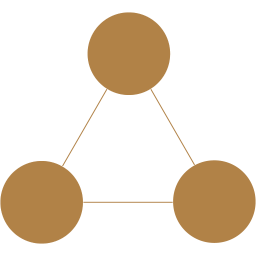What is GIMRT?
About
What is GIMRT?
What is GIMRT?
In principle, GIMRT distinguishes from more usage of experimental facilities, but rather conducts joint research projects performed in the divisions of IMR in order to address researches in materials science fields.
Who can apply for GIMRT?
Collaborative research is opened for academic-staff members of universities and research institutions sponsored by various governmental agencies, mainly the Ministry of Education, Science and Culture, as well as private organizations.
How dose GIMRT support your research?
-
 GIMRT is the bridge for multi-core collaboration research to establish international open research alliances in materials science.
GIMRT is the bridge for multi-core collaboration research to establish international open research alliances in materials science. -
 GIMRT offers support for overseas researchers to visit Japan for research collaborations involving IMR, domestic, and non-Japanese researchers.
GIMRT offers support for overseas researchers to visit Japan for research collaborations involving IMR, domestic, and non-Japanese researchers. -
 GIMRT offers opportunities for young scientists from Japan to conduct research at overseas institutions.
GIMRT offers opportunities for young scientists from Japan to conduct research at overseas institutions. -
 GIMRT helps to coordinate international workshops, joint-projects, joint-laboratories and knowledge sharing as well as research material transfers.
GIMRT helps to coordinate international workshops, joint-projects, joint-laboratories and knowledge sharing as well as research material transfers.

GIMRT Code of Conduct
Historical Background
| 1916 | The Institute was initiated in Tohoku Univ. as the 2nd Division of “the Provisional Institute of Physical and Chemical Research”. |
|---|---|
| 1987 | RIISOM was reorganized as a countrywide collaborative research institute to meet the current rapid progress in materials science and renamed lnstitute for Materials Research (lMR). Laboratory for Developmental Research of Advanced Materials was established. |
| 1991 | High Field Laboratory for Superconducting Materials was established. |
| 1996 | Laboratory of Low Temperature Materials Science was established. |
| 2002 | International Frontier Center for Advanced Materials was established.( 〜2008) |
| 2004 | Irradiation Experimental Facility was renamed as International Research Center for Nuclear Materials Science. |
| 2005 | Laboratory for Advanced Materials was renamed as Advanced Research Center of Metallic Glasses. |
| 2008 | International Collaboration Center was established. |
| 2009 | A joint usage/research center for material science was certified. |
| 2010 | Center for Computational Materials Science was established. |
| 2013 | Advanced Research Center of Metallic Glasses was renamed as Cooperative Research and Development Center for Advanced Materials. |
| 2018 | Global Institute for Materials Research Tohoku (GIMRT) was certified. |
| 2023 | Innovative Knowledge Hub for Humanities and Materials Science was started. |
| 2024 | Quantum Beam Center for Materials Research was established. |




